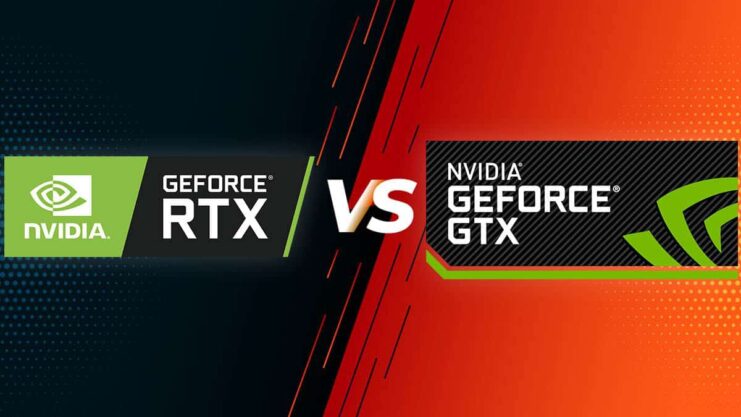Graphics Processing Units (GPUs) have revolutionized not just gaming, but also fields like data science. They accelerate complex computations and make training machine learning models faster.
NVIDIA, a leader in this technology, offers two main lines of GPUs: GTX and RTX.
Each series caters to different needs and budgets, making the choice between them crucial for both gamers and data scientists.
In this article, you will learn about many things, including:
- NVIDIA offers two main lines of GPUs – GTX and RTX, each catering to different needs and budgets.
- The GTX series is known for bringing high-performance graphics to a wider audience.
- The RTX series represents a significant leap in GPU technology, especially for AI and machine learning.
- Both the GeForce RTX 20-Series and GTX 16-Series are built on the Turing architecture.
Without further ado, let us begin.
GTX
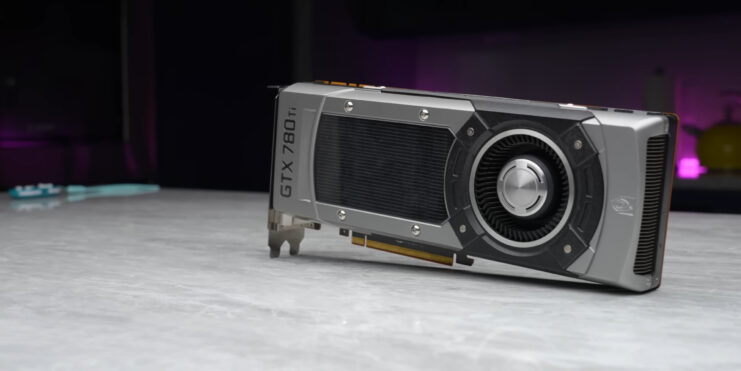
NVIDIA’s GTX series has shaken the market, due to the advanced technology it uses. This series marked a significant milestone, bringing high-performance graphics capabilities to a much wider audience than ever before.
Designed primarily with gaming in mind, GTX GPUs quickly became a powerhouse with reliable and robust performance for a variety of applications. One of the key strengths of the GTX series is its compute performance, largely attributed to the inclusion of CUDA cores.
CUDA, which stands for Compute Unified Device Architecture, is a parallel computing platform and programming model developed by NVIDIA. It enables dramatic increases in computing performance by harnessing the power of the GPU.
One notable challenge is the VRAM (Video Random Access Memory) capacity. VRAM is crucial for storing texture and image data for processing by the GPU. In data science, where handling large datasets and complex models is common, VRAM limitations can become a significant bottleneck.
Despite these limitations, the GTX series offers a compelling price-performance ratio. They are often more affordable than their higher-end counterparts, making them an attractive option for budget-conscious users.
This affordability does not come at the cost of performance, as GTX GPUs still deliver respectable results in many scenarios.
RTX
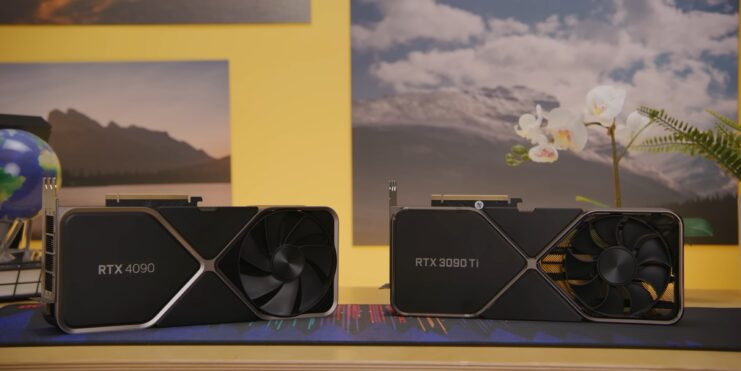
The launch of NVIDIA’s RTX series, with its prominent devices like RTX 3080 and 4080, represents an upgrade in GPU technology, particularly with artificial intelligence (AI) and machine learning.
These GPUs transcended the traditional boundaries of graphic rendering, venturing into the more complex territory of AI algorithm processing and large-scale data handling. This advancement was not just an incremental step forward but a significant leap, redefining what GPUs could achieve.
At the core of the RTX series’ capabilities are its enhanced CUDA cores and the introduction of Tensor cores. CUDA cores, already known for their efficient processing power in the GTX series, received substantial upgrades in the RTX line, offering even greater computational speed and efficiency.
It’s the addition of Tensor cores that truly sets the RTX series apart. These cores are specifically designed to accelerate deep learning tasks. They enable faster and more efficient processing of neural network operations, which are fundamental to AI and machine learning applications.
This combination of advanced CUDA and Tensor cores results in a GPU that is not only more powerful but also more adept at handling the intricacies of AI algorithms. The RTX series’ prowess in data-intensive tasks makes it particularly suitable for the field of data science.
Processing large datasets and complex computational models is routine. The enhanced compute performance of RTX GPUs means that these tasks can be completed more quickly and efficiently, leading to faster insights and more iterative data analysis.
Architectural Differences
The Turing architecture, developed by NVIDIA, represents a monumental advancement in GPU design and capability. It serves as the foundation for both the GeForce RTX 20-Series and GTX 16-Series, bringing a new era of performance and efficiency to the world of graphics processing.
The architecture is named after the renowned mathematician and computer scientist Alan Turing and is a fitting tribute to his contributions to the field of computing.
Performance and Efficiency
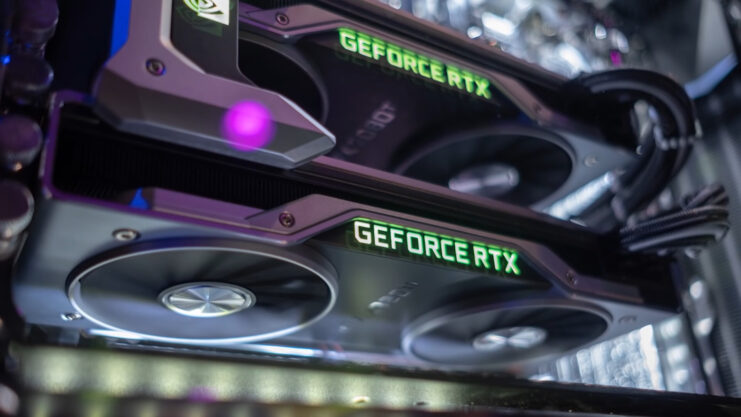
The Turing architecture is engineered to deliver exceptional performance. It achieves this through a combination of advanced GPU processing capabilities and energy efficiency. This balance is crucial in modern computing, where power consumption is as much a concern as performance.
Turing GPUs are designed to deliver maximum graphical output while maintaining lower energy consumption compared to previous architectures. This efficiency is particularly important for users who require long hours of operation, whether for gaming, content creation, or data processing.
Next-Generation Shading Technology
One of the standout features of the Turing architecture is its next-generation shading technology. This technology enhances the visual quality of games and other graphics-intensive applications. It includes improvements in rasterization, which is the process of converting 3D models into 2D images with realistic shading and textures.
The architecture also introduces new capabilities like variable rate shading (VRS), which optimizes rendering by applying varying levels of detail to different areas of the scene. It not only improves image quality but also enhances the overall performance by focusing processing power where it’s most needed.
Real-Time Ray Tracing and AI Enhancements
While the Turing architecture benefits both the RTX 20-Series and GTX 16-Series, it is in the RTX series that its full potential is realized. The RTX GPUs take a significant leap forward by incorporating real-time ray tracing and AI-driven enhancements.
Ray tracing is a rendering technique that simulates the physical behavior of light, resulting in highly realistic images. It creates lifelike shadows, reflections, and refractions, adding a level of realism to games that was previously unattainable in real-time graphics.
| Feature/Technology | GeForce RTX 20-Series | GTX 16-Series |
|---|---|---|
| Core Architecture | Turing | Turing |
| Ray Tracing | Yes (Real-Time) | No |
| AI Enhancements | Yes (DLSS, etc.) | No |
| Shading Technology | Advanced (Variable Rate Shading) | Standard |
| Energy Efficiency | High | Moderate |
| Target Use | High-End Gaming, Professional Graphics, AI & ML | Gaming, General Use |
| Price Range | Higher | More Affordable |
Gaming Performance
NVIDIA’s RTX series, equipped with cutting-edge real-time ray tracing capabilities, has set a new benchmark in gaming realism. This feature is a game-changer, quite literally, as it allows for the creation of scenes with incredibly realistic lighting and shadow effects, vastly enhancing the immersive quality of games.
Real-Time Ray Tracing
Real-time ray tracing, a highlight of the RTX series, simulates the physical behavior of light, offering a level of realism previously unattainable in real-time graphics.
This technology creates lifelike images with accurate reflections, shadows, and refractions.
| Feature | GeForce RTX Series | GTX Series |
|---|---|---|
| Real-Time Ray Tracing | Yes | No |
| Dedicated RT Cores | Yes | No |
| Ray-Tracing Performance | Up to 6x Faster | Not Supported |
| Games with Ray Tracing | ‘Control’, ‘Metro Exodus’, etc. | Limited Support |
Enhanced Gaming Performance
The RTX series doesn’t stop at ray tracing. It also includes Tensor Cores, which are specialized for AI processing.
| Feature | GeForce RTX Series | GTX Series |
|---|---|---|
| AI Enhancements (DLSS) | Yes | No |
| Image Upscaling | AI-Powered | Standard Techniques |
| Frame Rate Performance | Higher with DLSS | Standard |
| Target Gaming Experience | High-End, Realistic | Standard, Competitive |
Graphics and Rendering
The realm of graphics and rendering has witnessed a transformative shift with the advent of NVIDIA’s RTX series. This series has redefined expectations in the gaming and graphics industry, primarily due to its advanced technological capabilities.
The RTX GPUs stand at the forefront of this change, offering features and performance that significantly surpass what was previously available with the GTX series.
Enhanced Detail and Realism
The impact of real-time ray tracing on gaming and rendering is profound. It enhances the detail and realism of scenes, making environments and characters more lifelike and immersive.
For instance, the play of light through a window, the subtle reflections in water, and the way shadows move dynamically in a game environment all contribute to a more engaging and believable experience.
Tensor Cores and AI-Driven Graphics
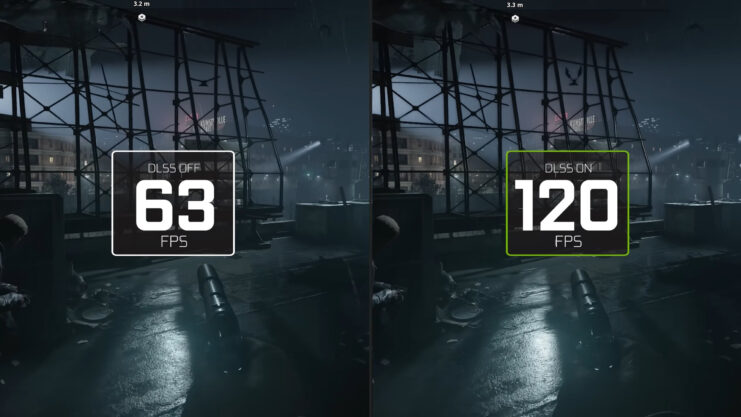
Another significant feature of the RTX series is its Tensor Cores, which are designed for AI processing.
These cores enable features like NVIDIA’s Deep Learning Super Sampling (DLSS). DLSS uses artificial intelligence to upscale images, delivering higher resolution visuals without the heavy performance costs typically associated with higher resolutions.
This means that games can run at higher frame rates, even with advanced graphics settings, ensuring a smooth and responsive gaming experience. The GTX series, lacking these Tensor Cores, does not have the same capability to leverage AI for graphics enhancement.
Impact on Creative Workflows
The benefits of the RTX series extend beyond gaming. In creative and professional workflows, such as 3D rendering, visual effects, and architectural visualization, the advanced graphics and rendering capabilities of RTX GPUs translate into more efficient and productive work processes.
Artists and designers can render scenes more quickly and with greater accuracy, reducing the time spent on iterative processes and allowing more time for creative exploration.
Price and Value Proposition
When considering the purchase of a GPU, price plays a pivotal role in the decision-making process.
| GPU Series | Price Range | Target Audience |
|---|---|---|
| GTX Series | $100-$300 | Casual gamers, budget-conscious users, entry-level computing |
| RTX Series | $300-$1000 | Professional gamers, graphic designers, advanced computing |
The cost of a GPU can significantly impact a buyer’s choice, especially when balanced against the features and performance offered.
NVIDIA’s GTX and RTX series cater to different segments of the market in this regard, each with its own value proposition.
The GTX series is known for its affordability, making it a popular choice among budget-conscious consumers. These GPUs offer respectable performance for standard gaming and general computing tasks, making them a cost-effective solution for users who do not require the cutting-edge features of more advanced GPUs.
The GTX series is particularly appealing to casual gamers, students, and those setting up entry-level gaming rigs or workstations. It provides a balance of performance and cost, ensuring that users can enjoy good graphics quality without a hefty investment.
On the other end of the spectrum, the RTX series is positioned as a premium offering. These GPUs are priced higher, but for a good reason. They come equipped with advanced features like real-time ray tracing and AI-driven enhancements, such as DLSS.
For professional gamers, graphic designers, and users involved in intensive video editing or 3D rendering, the RTX series offers a level of performance that justifies its higher price tag. The RTX GPUs are not just about gaming; they are about experiencing and creating with the best visual fidelity and efficiency possible.
FAQs
Which Nvidia GTX is best?
The best Nvidia GTX model often depends on your specific needs and budget. As of my last update, the GTX 1660 Ti is widely regarded as a great balance of price and performance within the GTX series, offering solid gaming performance at a reasonable cost.
What is the fastest GTX GPU?
The fastest GPU in the GTX series is the Nvidia GeForce RTX 4090. It offers high-end gaming performance, making it one of the most powerful options in the GTX lineup.
What is the best performance Nvidia GPU?
For the best performance, Nvidia’s RTX series, particularly the RTX 3090, stands out. It’s designed for high-end gaming and professional graphics work, offering exceptional performance and advanced features like ray tracing and AI-enhanced graphics.
Is GTX 1660 good for gaming?
Yes, the GTX 1660 is good for gaming, especially for gamers on a budget. It offers solid performance for 1080p gaming and can handle most modern games at medium to high settings.
Closing Thoughts
Choosing between NVIDIA’s GTX and RTX series depends on your specific needs and budget.
For data scientists and AI professionals, the RTX series offers superior compute performance and larger VRAM options, making it better suited for machine learning and other intensive tasks.
Gamers seeking the highest level of realism and performance will also find the RTX series more appealing. For those with budget constraints or less demanding applications, the GTX series remains a viable and effective option.

